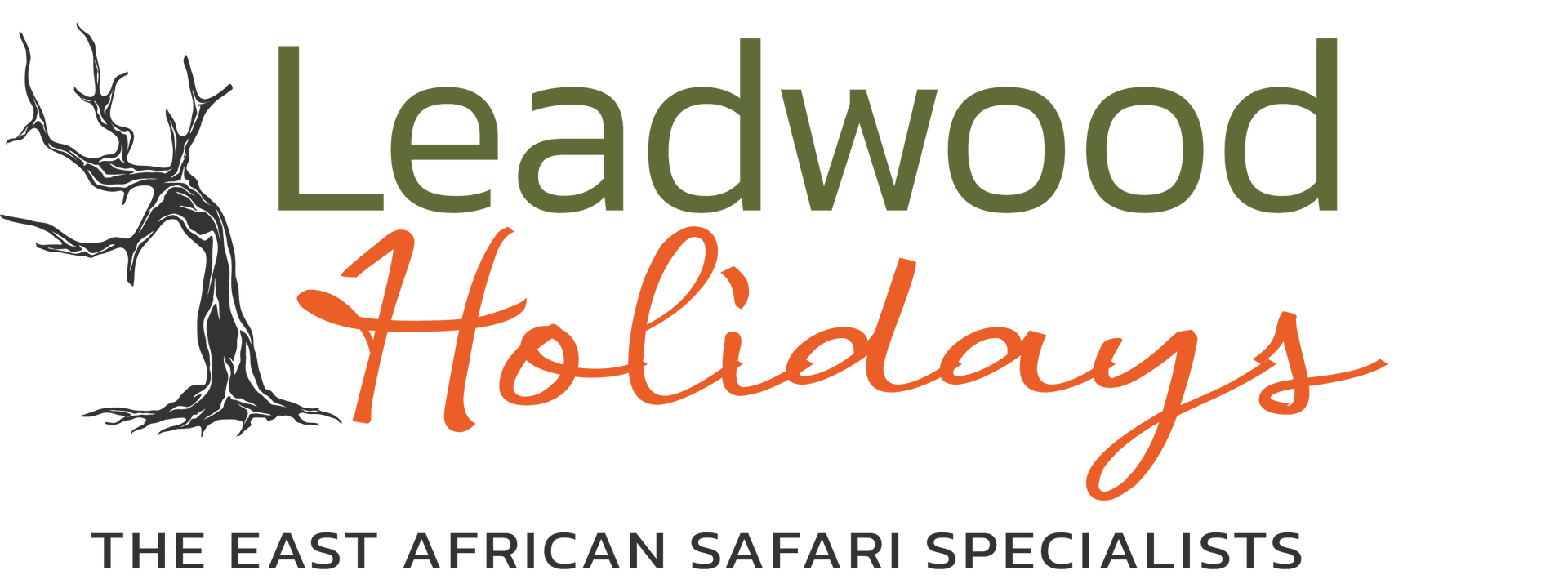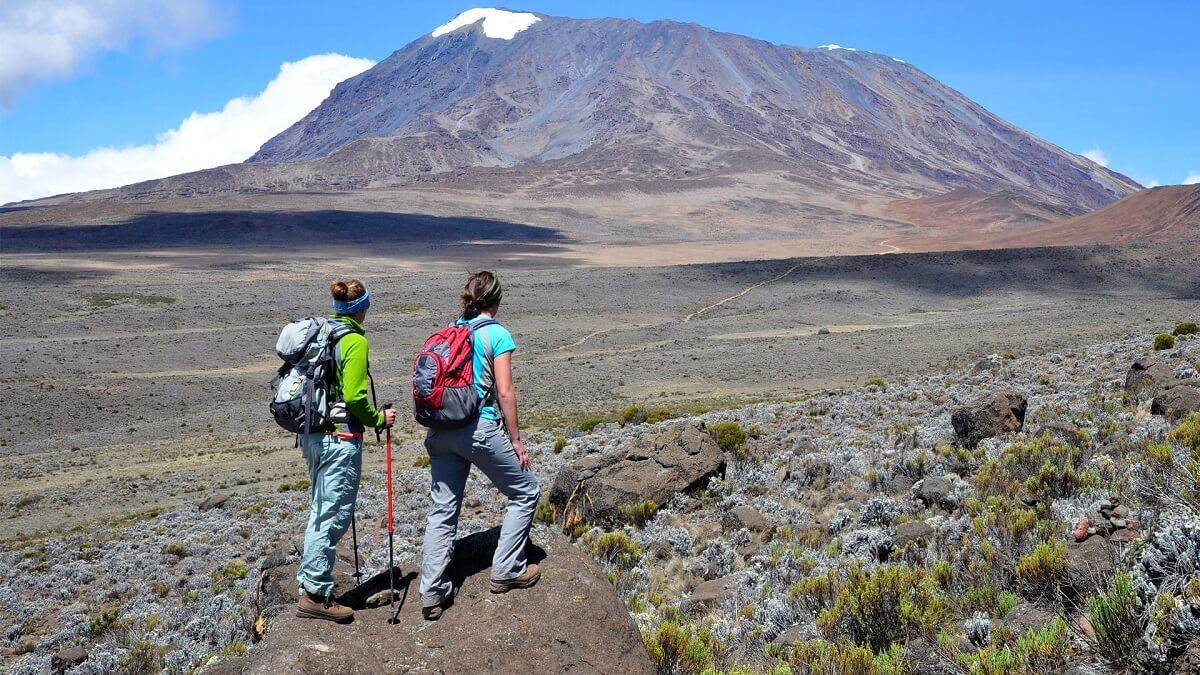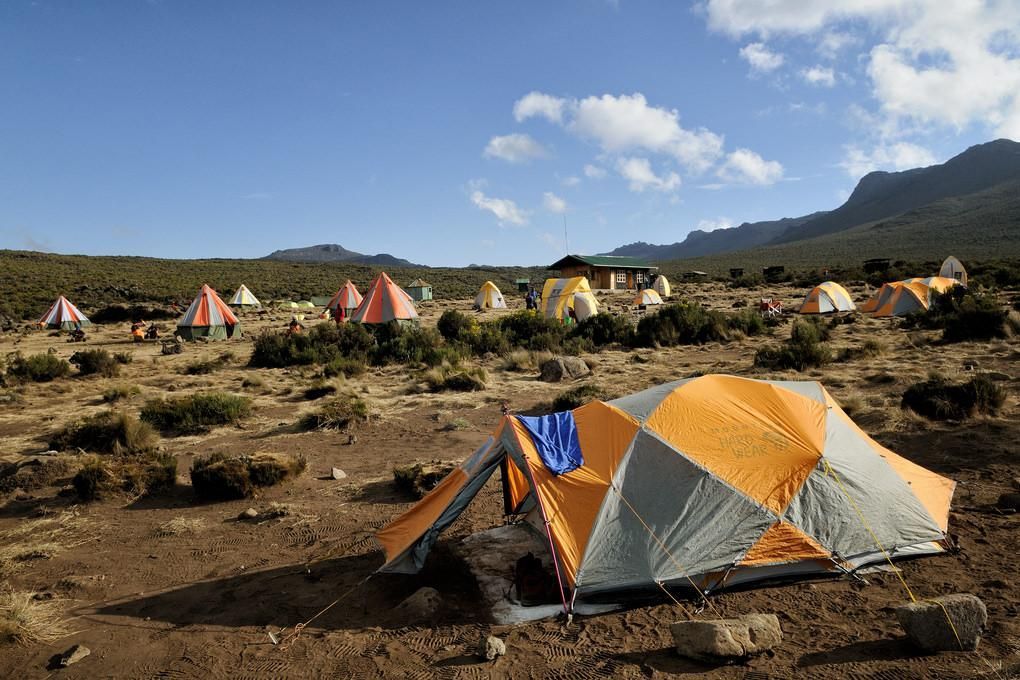YOUR TREKKING OPTIONS
Kilimanjaro’s trekking routes offer different options for anyone wanting to climb it. There are routes available for more experienced climbers and a route available for those who would consider themselves beginners. Each route is tailored to ensure hikers enjoy their climb to reach the peak, catching glimpses of awe-inspiring views en-route to the summit - Uhuru Peak.
To find the best Kilimanjaro route for you, considerations should be taken for the route’s difficulty, scenery, and popularity. Those who reach Uhuru Peak, or Gillman’s Point on the lip of the crater, will have earned their climbing certificates.
There is so much more to Kilimanjaro than her summit. The ascent of the slopes is a virtual climatic world tour, from the tropics to the Arctic. Even before you cross the national park boundary (at the 2,700m contour), the cultivated slopes give way to lush montane forest, inhabited by elusive elephant, buffalo, the endangered Abbot’s duiker, and other small antelope and primates. Higher still lies the moorland zone, where a cover of giant heather is studded with otherworldly giant lobelias.
Above 4,000m, a surreal alpine desert supports little life other than a few hardy mosses and lichen. Then, finally, the last vestigial vegetation gives way to a winter wonderland of ice and snow – and the magnificent beauty of the roof of the continent.
ROUTES TO THE TOP
ON THE MOUNTAIN
Once on the mountain, asides from your mental determination to make the climb it's your well-equipped guides and porters who contribute to a successful summit attempt. For the duration of your Kilimanjaro trek, your guide will be your advisor and will lead you to the summit and bring you down safely again. It will be important that you work closely with your guide and take note of all advice.
All climbers on Kilimanjaro are required to be accompanied by a guide. Our treks are led by highly trained and qualified guides registered with the Kilimanjaro National Parks Board. Each guide has been carefully selected over the years, based on experience, safety records, and feedback from previous climbers. Their expertise has contributed to our impressive 96%+ success rate, safely guiding over 14,000 climbers to the summit.
Staff ratios
We maintain an excellent staff-to-climber ratio, with an average of 2–3 porters per hiker and two guides for every group of up to four climbers. This ratio, along with our superior support equipment, ensures both your safety and enjoyment on the mountain.
Porters & cook
Our porters not only transport your gear and supplies but also set up your tent before your arrival at each camp. They will also provide boiled drinking and washing water in the evening, while our cook prepares meals that frequently impress our clients.
There is a strict weight limit of 15 kg (32 lbs) per climber. We recommend packing your gear in a soft duffel bag (barrel type), as porters prefer to carry loads balanced on their heads and shoulders.
Tipping
Tipping is a well-established tradition on Kilimanjaro climbs. We suggest tipping between US $200–250 per climber for the entire crew at the end of the trek, with the amount varying based on group size and duration of the climb. It is customary to give the tip to the lead guide, who will then distribute it among the team. It is recommended to wait until you and your gear have descended the mountain before tipping.
Below are the suggested tipping amounts per day, per group:
Chief Guide: US $20
Assistant Guide: US $15–18
Cook: US $12–15
Porter: US $8–10
Go slowly - "pole pole"
Take it slow, especially in the early days of your climb, even if you feel good. Rushing is a major cause of altitude sickness, so the slower you go, the better your body can acclimatise.
Drink 3–4 litres of water daily. On your first day, bring fresh water, which can be bought at your hotel in Moshi. From the second day, running water is safe to drink, but consider using water purification tablets if you're not used to untreated water.
Walk high, sleep Low
On acclimatisation days, try to take a short walk to a higher altitude before descending to sleep at a lower one. This technique helps your body adjust to the altitude. Pack as lightly as possible, especially for summit night. Extra weight will slow you down and make breathing more difficult. Ensure your headlamp and camera have fresh batteries for summit night.
Ski poles reduce strain on your knees by up to 20%. It’s highly recommended to use two poles, though one is essential. You can buy or hire them before your climb.
Clothing
Wear appropriate layers to stay warm and dry. Thermal underwear with moisture-wicking properties is essential, as cotton traps moisture and can lead to hypothermia. The middle layer should provide insulation, such as polar fleece, while the outer layer must be windproof, waterproof, and breathable (Ventex, Goretex, or similar).
For summit night, you'll need a jacket that can protect against temperatures as low as -25°C while still allowing your body to breathe. On lower slopes, lighter clothing such as shorts, sweaters, and T-shirts are suitable for warmer daytime temperatures. A balaclava is also recommended to protect your face from the elements.
You'll be on the mountain for at least 5–6 days, so pack enough clothing, especially socks, for the duration. Given the frequent rain and numerous streams, it’s best to wrap your items individually in plastic to keep them dry.
Health & safety
Accute Mountain Sickness (AMS) affects many climbers at high altitudes and can be dangerous if ignored. Familiarise yourself with the symptoms and take preventive measures. Malaria is a risk below 1,800 metres, so consult your doctor for the appropriate prophylactics. Women using oral contraceptives should check with their physicians about possible interactions with malaria medications.








